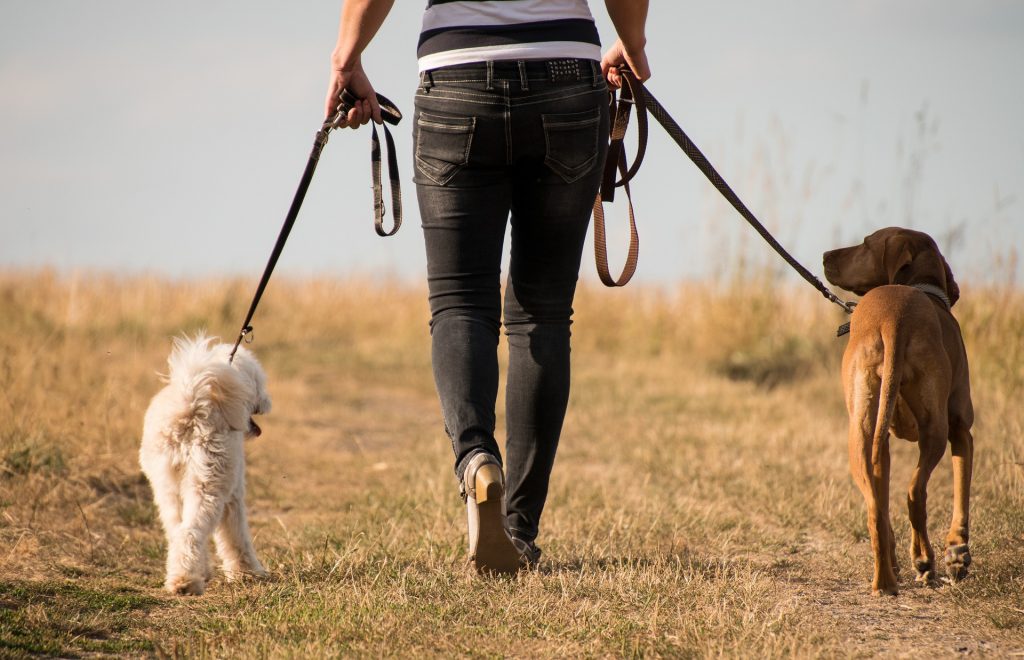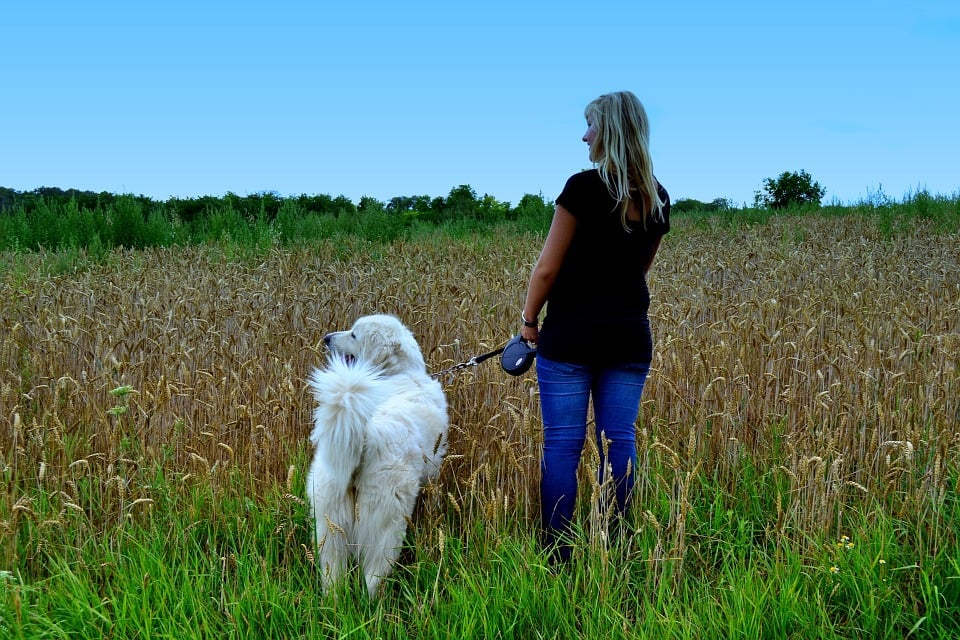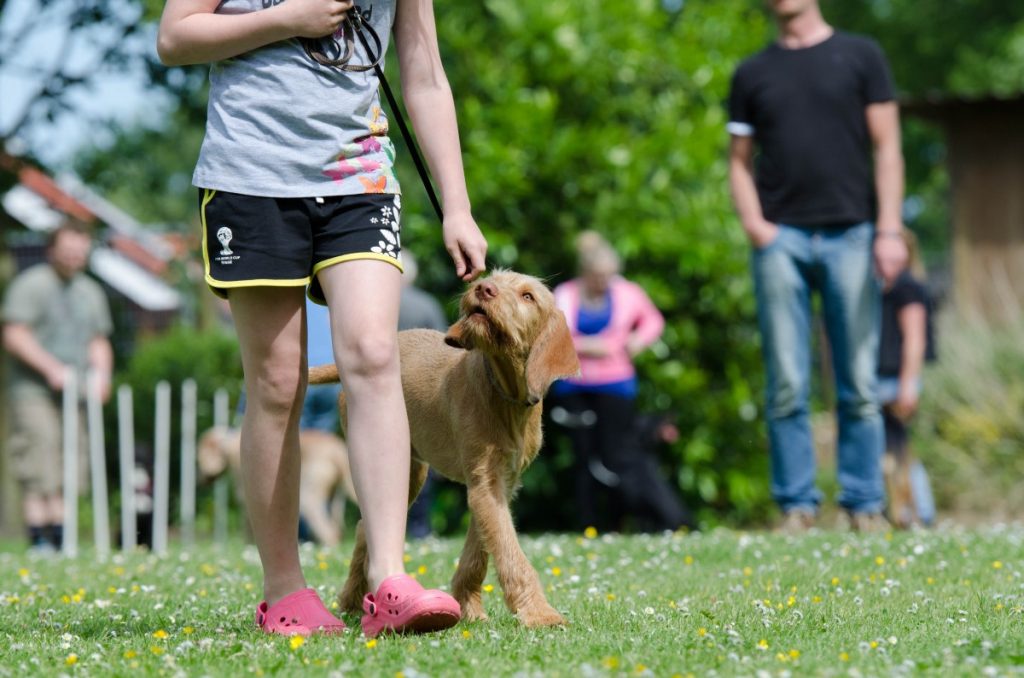Dogs need exercise to stay in shape, both physically and mentally. Big or small, puppy or senior, your dog needs daily physical activity. But how many times you should walk your dog each day depends on their particular needs. If you’ve ever wondered “how often should I walk my dog?”, we’ve got you covered.
Walking is good for your dog’s health (and yours, too)
Let’s talk about why walks matter in the first place. Sure, your dog needs to go outside to pee and poop. But walks are so much more than toilet breaks!
Walking your dog keeps them healthy in several ways:
- Weight control. Regular exercise helps your dog burn extra calories and maintain a healthy weight.
- Joint health. Have you ever had stiff legs after sitting for a long time? Your dog’s joints are similar; keeping them in motion helps their joints stay in good shape.
- Digestive/urinary health. We all know what happens when dogs take walks: they poop! Regular walks keep them regular. And peeing around the neighbourhood isn’t just good for their health; it’s also part of how dogs communicate by smell.
Notice anything about the above benefits of dog walks? They don’t only benefit your dog! Regular dog walks can improve your health, too, including help you lose weight (though you probably don’t need to pee on everything you pass).
Dog walks vs. pee breaks
You may be wondering if your dog really needs more than one walk per day, or if a quick romp around the garden to do his business will suffice. Of course, it depends on your dog. But in general, dogs like longer walks because it gives them a chance to explore the world.
Longer walks also keep your dog mentally healthy. Without enough exercise to stimulate their mind, some dogs become anxious or destructive. The one-on-one time spent on walks can help deter attention-seeking behaviours like whining or barking. Plus, it’s a great way to bond with your pet.
Remember, walking the dog should be fun! It’s a fundamental activity of dog companionship, and one of the best ways to maintain their emotional, mental, and physical health.
Different dogs have different walking needs

via pixabay
When deciding how often to walk your dog, consider their age, activity level, health, and breed. Younger dogs with more energy benefit from more frequent walks. On the other hand, senior dogs with mobility issues do fine with fewer walks.
These higher-energy dog breeds may benefit from more frequent walks:
- Terriers
- Border collies and other herding breeds
- Huskies
- Australian shepherds
- Labrador and golden retrievers
On the other hand, these less-active dog breeds may be fine with just one or two shorter walks per day:
- Great Danes
- Newfoundlands
- Mastiffs
- Greyhounds
- Bulldogs
Of course, young dogs of any breed typically need more activity than seniors. And dogs with injuries or illnesses may have limited stamina for walks. Consult your vet to establish an appropriate exercise plan for your dog.
How often should I walk my dog?
In general, most dogs benefit from between 30 minutes to two hours of physical activity per day (source). That averages out to 3.5 to 14 hours of walking per week. Many people break that time up into two or three walks per day. But the specific quantity and duration of walks may vary from dog to dog, and day to day.
Beyond general bathroom needs, there’s no perfect formula to determine how often to walk your dog. Start with a gentle 30-minute walk. That’s a good starting point for dogs and humans alike, especially if you’ve been sedentary for a while. From there, gradually walk longer, or add a second walk during the day.
On days when time is extra-short, or your dog’s energy exceeds your own, you can spice up your walk with other energy-burning activities. Try adding a game of fetch, playtime with other dogs, or going for a quick jog. And you can always call on a Rover walker or daycare provider to help your dog get their daily exercise.
The best time to walk your dog
Wondering if it’s best to walk your dog first thing in the morning? Last thing before bed? Before meals? And of course, the age-old question: how soon should I walk my dog after he eats for optimum poop-portunities? I hate to sound like a broken record, but the answer is: it depends! The most important thing is to keep your dog on a schedule. Dogs thrive on routine.
According to vet Michael W. Fox, writing in the Washington Post, an ideal dog walking schedule is:
- A short morning walk before breakfast
- Another short walk or bathroom break midday
- A longer walk or run before dinner
- Another walk or bathroom break right before bed
This routine generally suits the eating, exercise, and evacuation needs of healthy dogs. But of course, not every family can follow this exact schedule! But one long walk and a few short walks or pee breaks is about right for many dogs.
So what’s the definitive answer to “how often should I walk my dog?” Well, at least once a day, but preferably twice—not counting bathroom breaks. If a busy work day is making it hard to fit in a midday dog walk, no worries. Get in touch with a Rover.com walker or a dog sitter who offers dog boarding to help meet all your dog’s walking needs.





